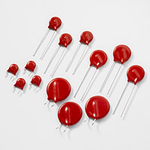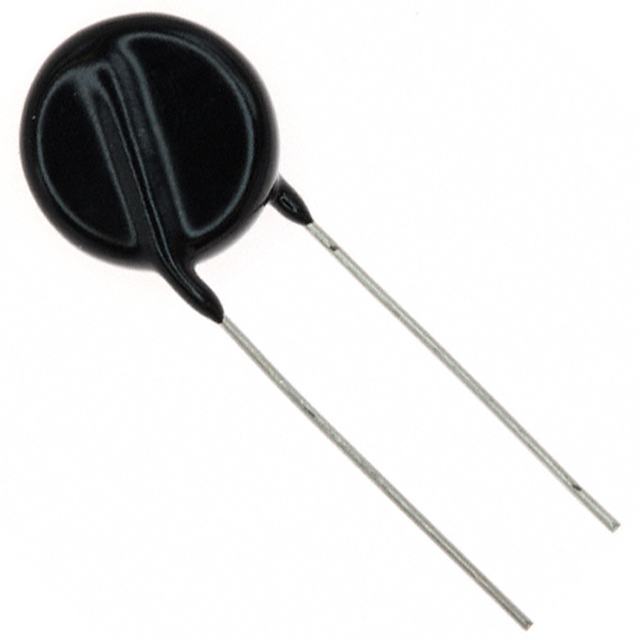
Conditional Access Module (CAM): The Pay-TV Gatekeeper Engineers Actually Enjoy Reading About
Global electronic component supplier ERSAELECTRONICS: Rich inventory for one-stop shopping. Inquire easily, and receive fast, customized solutions and quotes.
1) What a Conditional Access Module Actually Does
A conditional access module (CAM) is a removable security brain that plugs into a TV or set-top box to enforce subscriptions for pay-TV. In practical engineering terms, the conditional access module terminates the conditional access side of a digital TV broadcast stream and hands the decrypted control words back to the host so the host can descramble the video and audio payload. The conditional access module speaks a well-defined host interface (historically PCMCIA-like) branded CI or CI+, and it collaborates with a Conditional Access System (CAS)—think Nagra, Viaccess, Irdeto, Conax, etc.—that runs the business logic of who paid for what and when.
You can picture the conditional access module as the guest star who appears in Season 3 of your favorite series: arrives with a tidy suitcase (smart card), checks your ticket (ECM/EMM), and either lets the plot continue or fades the screen to an unhelpful “This service is scrambled” message. The conditional access module isn’t the whole TV; it’s the policy enforcer that keeps the broadcast economics sane.
2) A Movie-Style Plot: From Parental Lock to Prime-Time
Let’s storyboard the Saturday night premiere like an MCU crossover: Your DVB-S2 tuner locks to a transponder. A TS demodulator pulls coherent transport stream packets. Among them: ECM (Entitlement Control Messages) and EMM (Entitlement Management Messages). The host routes ECM/EMM to the conditional access module through CI/CI+ messaging. The conditional access module authenticates the host, checks your smart card or embedded secure element, unpacks control words (short-lived decryption keys), and provides them back to the host’s descrambler engine.
Meanwhile, parental control rules may ride along in operator profile data. If your account says “no late-night zombies,” the conditional access module complies—sorry, The Last of Us. Within seconds the control word rotates again (typically every ~10 seconds in many systems), and the conditional access module keeps feeding fresh keys to the host. The audience sees smooth video; you see green graphs on your transport analyzer. Everyone is happy.
3) Standards & Interfaces: DVB-CI, CI+, TS, and Friends
Conditional access is rooted in broadcast standards. The alphabet soup looks intimidating until you map it:
- DVB-CI (Common Interface): The original spec defining how a host (TV/STB) talks to a conditional access module using a PC-Card form factor. It covers transport of MPEG-TS and application protocols like EN 50221.
- CI+ (Common Interface Plus): An evolved profile that layers stronger authentication, link encryption, and content control between host and conditional access module. It adds rules around recording, trick modes, and robust revocation—necessary for premium content.
- Transport Stream (MPEG-TS): The packetized container carrying video, audio, and conditional access data (ECM/EMM). The host demultiplexer steers ECM/EMM toward the conditional access module and payload toward the video pipeline.
- CAS (Conditional Access System): The operator’s backend and on-air signaling framework providing ECM/EMM. Vendors supply conditional access module firmware tuned to their CAS flavor.
- Others you’ll encounter: DVB-S/S2/S2X, DVB-T/T2, DVB-C/C2, ISDB variants, and sometimes ATSC when paired with a pay-TV overlay.
.png?x-oss-process=image/auto-orient,1/quality,q_70/format,webp)
4) Hardware Architecture: Inside the Conditional Access Module
Crack open a typical conditional access module and you’ll find a compact stack of very deliberate silicon:
4.1 Core Blocks
- CI/CI+ Interface Controller: The front desk. Implements the PC-Card electricals and CI+ link-level security, negotiates capabilities with the host, and moves TS and command APDUs.
- Secure MCU or SoC: Runs CAS firmware inside a tamper-resistant boundary (bus monitors, voltage/clock glitch detection, active mesh, secure boot). Includes a true random number generator and crypto accelerators.
- Smart-Card Reader / eSE: Either a removable ISO/IEC 7816 smart card or an embedded Secure Element for operator-locked designs in the conditional access module.
- Demux/Descrambler Engine: Parses ECM, filters PIDs, and handles DVB-CSA/CSA3/AES-based streams per CAS requirement. Some CI+ flows keep payload descrambling on the host, while the conditional access module focuses on control words—implementation varies.
- Secure NVM: Stores device keys, certificates, and provisioning blobs with anti-cloning measures (PUF or monotonic counters).
4.2 Supporting Cast
- Power Tree: 5V from the host down to clean low-noise rails; hot-plug surge, ESD, and OVP protection; sequencing for SE and MCU.
- High-speed TS/Host Links: LVDS/parallel TS paths, link encryption for CI+, and sideband UART/I²C for debug (usually sealed behind jumpers).
- Clocking: Low-jitter XO for crypto timing; sometimes an auxiliary crystal for smart card baud stability.
- Physical Security: Epoxy potting over key nets, shield cans, mesh layers on top metal, and “erase on open” sensors.
5) Software & Security Stack: ECM, EMM, Key Ladders
The software side of a conditional access module is where the “spy thriller” lives. A clean way to think about it is three nested loops: authenticate, authorize, and update.
5.1 ECM vs EMM
- ECM: Tiny, frequent, per-service messages carrying encrypted control words and access criteria. The conditional access module decrypts ECMs using keys bound to the subscriber/SE and recent authorization state.
- EMM: Infrequent, larger messages that change who’s allowed to watch what. They update the subscriber’s entitlements, renew keys, or revoke compromised devices via the conditional access module.
5.2 Key Ladder & Secure Boot
Keys never travel naked. A key ladder unwraps from a root (device unique) through intermediate keys to working control words—within the conditional access module’s secure boundary. Proper conditional access modules enforce no-readback policies: even trusted firmware can’t dump raw keys. Secure boot authenticates code images using manufacturer and operator certificates so rogue code can’t run.
5.3 High-Level Pseudocode
// Highly simplified: conditional access module main loop
while (powered && authenticatedHost()) {
routeECM();
if (newECMAvailable()) {
cw = decryptECM(ecmPayload, subscriberKeys); // runs in secure world
sendControlWordToHost(cw); // via CI+ secure channel
}
if (newEMMAvailable()) {
updateEntitlements(emmPayload); // may rotate keys
}
if (policyViolation() || tamperDetected()) {
zeroizeSensitiveState(); // kill switch
notifyHost("CAM revoked or tamper");
}
}
6) Bill of Materials: Tuners, Demods, MCUs, PMICs, and IC Picks
A conditional access module is small, but the component choices are non-trivial. Here’s a vendor-agnostic map you can adapt to your supply chain:
| Block | What Matters | Why It Affects CAM | Notes |
|---|---|---|---|
| CI/CI+ Interface IC | Spec compliance, link encryption, timing margin | Defines host handshake and throughput; failure here is certification pain for the conditional access module | Prefer parts with proven CI+ test logs and good errata transparency |
| Secure MCU/SoC | Secure boot, TRNG, crypto accel (AES/TDES/CSA), tamper detection | Runs CAS inside the conditional access module; must pass lab pen-tests | Look for PSA/CC certifications, active mesh, fault-injection resilience |
| Smart-Card Controller / eSE | ISO 7816, high-EMI tolerance, stable baud | Subscriber identity & entitlement store in the conditional access module | Consider dual path (external card + eSE) for SKU flexibility |
| Secure NVM | OTP/PUF, monotonic counters, anti-rollback | Prevents cloning and key replay | Partition secrets from updateable blobs |
| Power Tree (PMIC/LDO) | Hot-plug surge margin, low ripple, sequencing | Noise couples into card I/O and crypto timing | Add TVS, current limiters, and brownout reset tuned for CI slot |
| Clocking | XO jitter, temp drift | Impacts smart-card ATR stability and crypto performance | Shield trace and keep returns tight; avoid slot-edge crosstalk |
| Connectors & Mechanics | Insertion cycles, ESD path, ground fingers | User experience & field failures for the conditional access module | Use guide rails, chamfers, and stiffeners to prevent flex-cracks |
.png?x-oss-process=image/auto-orient,1/quality,q_70/format,webp)
7) TV/STB Integration: Signal Path, Latency, and CI+ Host Behavior
Integrating a conditional access module into a host isn’t a solder-and-pray job. The host’s demux, memory paths, and UI state machines all influence perceived zapping time and robustness.
7.1 Data Flow
- Tuner → Demod outputs MPEG-TS.
- Demux filters: payload flows to decoders; ECM/EMM PIDs route to the conditional access module over CI/CI+.
- The conditional access module authenticates & returns control words over a secure link.
- Host hardware descrambler applies control words to TS or ES level, then decodes A/V.
7.2 Latency Budget
- Channel change: lock + PSI/SI + ECM fetch + conditional access module processing + first key → target < 1–2 s user-perceived.
- Trick modes/recording (CI+): host must obey content control flags; the conditional access module may throttle keys to enforce operator policies.
7.3 Host Quirks to Test Early
- CI+ link renegotiation after hot-plug or brownout.
- Multiple services with shared ECM—ensure PID routing isn’t “sticky.”
- Standby/resume with timers—does the conditional access module get a clean power-up sequence?
- EMM storms on entitlement change days—buffer sizing and backoff.
8) Threats & Hardening: Glitchers, Probers, and Pirates
Pirates watch the same conferences you do. A realistic threat model for a conditional access module includes:
Common Attacks
- Voltage/Clock Fault Injection: try to skip branch checks during ECM parsing or key unwrap.
- Bus Probing: attach to TS or internal key buses; measure side channels.
- Smart-Card Relay: forward ATR/commands over the internet to create “ghost subscribers.”
- Firmware Downgrade: load older, vulnerable images without monotonic counters.
- Host Emulation: fake CI+ handshakes to siphon control words.
Countermeasures
- Glitch detectors, voltage/clock monitors, random delays around checks.
- Key ladder inside a non-exportable secure world; per-session key wrapping in the conditional access module.
- Active mesh and epoxy over critical nets; sensors tied to zeroize logic.
- Signed updates with anti-rollback counters stored in secure NVM.
- CI+ link encryption and device revocation support; rate-limit ECM errors.
9) Certification & Lab Tests: What Vendors Actually Check
Certification keeps everyone interoperable. Expect scripted torture for your conditional access module:
- Protocol Suites: APDU timing, reset sequences, error codes, renegotiation paths.
- Security Suites: host authentication, link cipher sanity, revocation reactions.
- Content Control: recordability flags, copy-once/never, output controls (HDCP paths on the host).
- Environmental: temperature soaks, hot-plug cycles, ESD strikes to the connector shell.
- EMC: radiated/conducted emissions—smart-card I/O is surprisingly chatty if you don’t tame edges.
Bring a deterministically reproducible log format; certification labs love timestamps and hex dumps more than popcorn.
.png?x-oss-process=image/auto-orient,1/quality,q_70/format,webp)
10) Troubleshooting in the Field: A Practical Cookbook
Symptom → Likely Root Cause → What to Check
- “No CI module detected” → hot-plug debounce or bent connector fingers → inspect slot, ESD diodes, and 5V inrush limiter on the conditional access module slot.
- “Service is scrambled” after 20–30 s → control word rotation not sustained → ECM routing breaks on PID remap; watch TS analyzer during zaps.
- Intermittent macroblocking → power ripple coupling into card I/O → scope the smart-card CLK/IO lines during disc spinner or Wi-Fi TX bursts.
- Works cold, fails hot → timing margin → reseat XO, check CI+ link timing at 60–70 °C and verify brownout thresholds.
- Random revocations → CI+ cert store corruption → validate NVM ECC and wear-leveling, confirm update atomicity on the conditional access module.
Golden Tools
- TS analyzer with PID filters & PCR jitter view.
- Smart-card protocol sniffer (with proper authorization) for ATR/TPDU timing.
- Thermal chamber + programmable AC brownout box.
- Oscilloscope with protocol decode for UART/I²C on debug headers.
11) Beyond Broadcast: IP-CAS, HbbTV, and What’s Next
Broadcast is stable, but the living room upgraded its passport. Operators increasingly stitch Hybrid Broadcast Broadband TV (HbbTV) services and OTT apps alongside linear channels. Modern SoCs blend conditional access module and DRM worlds: the same box may descramble a satellite bouquet with a conditional access module and also run Widevine/PlayReady for streaming. Expect to see: lighter embedded conditional access modules, stronger silicon roots of trust, and faster certification loops tied to over-the-air update discipline.
12) Glossary: Acronyms You’ll See on Day One
- CAM: Conditional Access Module, the removable security module for broadcast TV.
- CAS: Conditional Access System, the backend and signaling framework from the operator.
- CI/CI+: Common Interface standards defining host↔conditional access module behavior and security.
- ECM/EMM: Control and management messages for access and entitlement.
- MPEG-TS: Transport stream carrying A/V and CA data.
- SE/eSE: (Embedded) Secure Element, tamper-resistant key store inside the conditional access module or host.
- PUF: Physically Unclonable Function, a silicon fingerprint for keys.














.png?x-oss-process=image/format,webp/resize,h_32)










